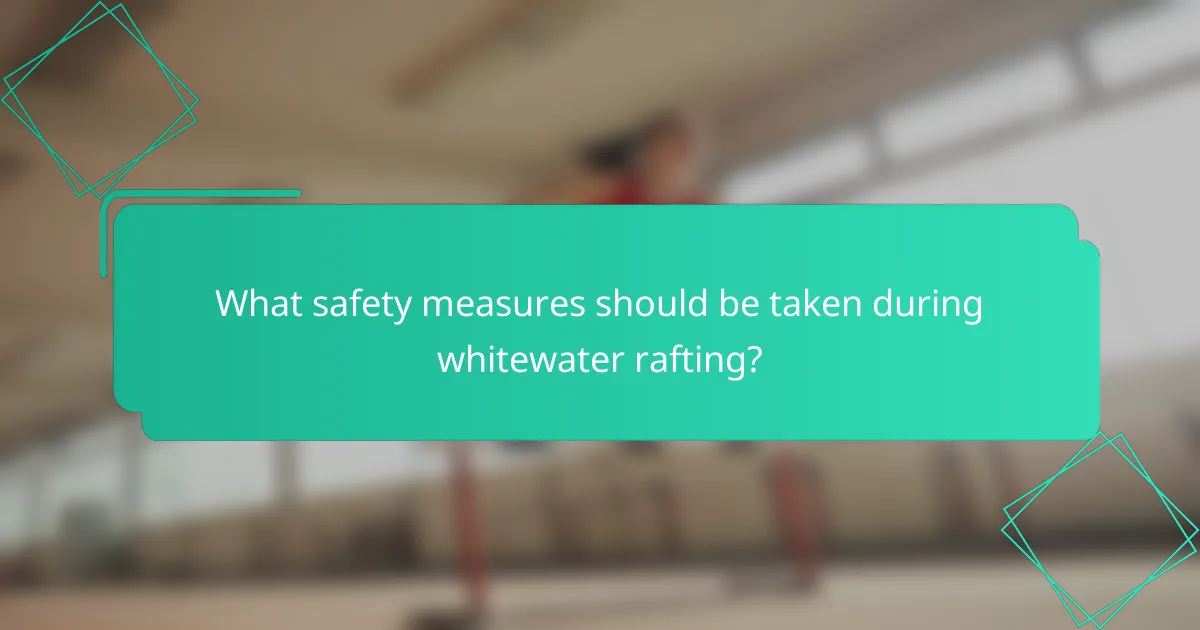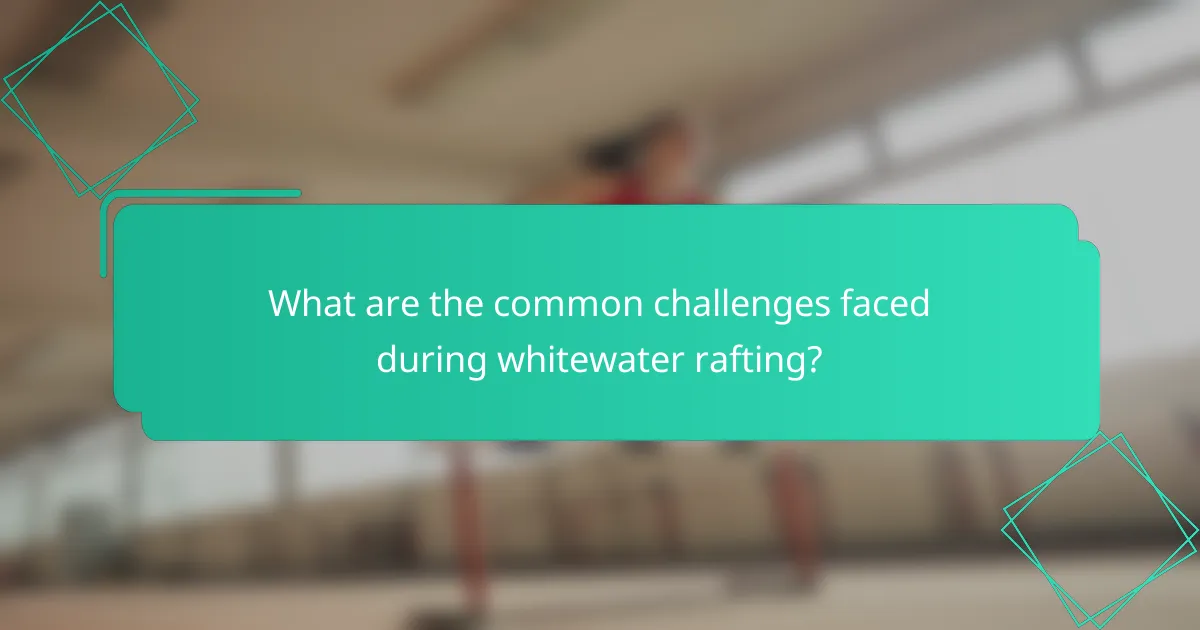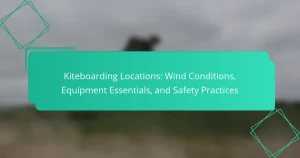Whitewater rafting offers thrilling adventures on some of the best rivers, but understanding rapids ratings is crucial for safety. This article covers the classification of rapids, essential safety measures, and top rivers for rafting experiences. Learn how to prepare effectively and navigate challenges while enjoying the excitement of the river.

What are the different rapids ratings and what do they mean?
Rapids ratings range from Class I to Class VI, indicating increasing levels of difficulty and danger. Class I features smooth water with small waves, while Class VI represents extreme conditions that are nearly impossible to navigate safely. Understanding these ratings helps ensure safety during whitewater rafting experiences.
How is the classification of rapids determined?
The classification of rapids is determined by their difficulty level, which ranges from Class I to Class VI. Each class reflects the intensity of the rapids, including factors like wave height, obstacle density, and skill required. Class I indicates easy, gentle currents, while Class VI represents extreme conditions that are considered unrunnable. This classification helps rafters assess their safety and choose appropriate rivers for their skill levels.
What safety measures are associated with each rapids rating?
Safety measures vary by rapids rating, ensuring participants’ protection. Class I rapids require basic safety gear, while Class V and VI demand advanced skills and equipment. Always wear life jackets, use helmets, and follow guides’ instructions. Familiarize yourself with rescue techniques and ensure proper boat maintenance.
Which rivers are known for specific rapids ratings?
The most notable rivers for specific rapids ratings include the Colorado River, Gauley River, and Salmon River. The Colorado River features Class V rapids in the Grand Canyon, while the Gauley River offers Class V+ rapids during the fall. The Salmon River is known for its diverse range of rapids, including Class III to Class V. Each river presents unique challenges and experiences for whitewater enthusiasts.

What safety measures should be taken during whitewater rafting?
To ensure safety during whitewater rafting, follow these essential measures. Always wear a properly fitted life jacket and helmet. Understand the river’s rapid rating and choose appropriate routes based on your skill level. Communicate effectively with your team and establish clear signals for emergencies. Be aware of weather conditions and potential hazards like rocks or strong currents. Lastly, take a safety course to enhance your skills and knowledge.
How does equipment affect safety in whitewater rafting?
Equipment significantly enhances safety in whitewater rafting by providing essential protection and stability. Properly designed rafts, helmets, and life jackets reduce the risk of injury during unpredictable rapids. For instance, high-quality rafts made from durable materials resist punctures and ensure better maneuverability in turbulent water. Additionally, safety features like self-bailing systems and secure foot straps help maintain control, minimizing the chance of capsizing. Ultimately, investing in reliable equipment is crucial for a safer and more enjoyable rafting experience.
What role do guides play in ensuring safety on the river?
Guides play a crucial role in ensuring safety on the river by providing expert knowledge and real-time supervision. They assess river conditions, navigate challenging rapids, and instruct participants on safety protocols. Guides also monitor group dynamics and respond to emergencies, enhancing overall safety during whitewater rafting experiences. Their training includes first aid and swift water rescue techniques, ensuring preparedness for unexpected situations.
What are the best practices for personal safety while rafting?
To ensure personal safety while rafting, always wear a properly fitted life jacket and a helmet. Follow these best practices:
1. Choose appropriate rapids based on your skill level.
2. Always raft with a guide or experienced paddlers.
3. Communicate clearly with your team about safety protocols.
4. Be aware of weather conditions and river levels.
5. Know how to perform a self-rescue and assist others.
6. Avoid alcohol and distractions while on the water.
These measures significantly reduce risks and enhance your whitewater rafting experience.

Which rivers are considered the best for whitewater rafting experiences?
The best rivers for whitewater rafting experiences include the Colorado River, Gauley River, Salmon River, and Rogue River. These rivers are renowned for their thrilling rapids and scenic beauty.
The Colorado River, particularly in the Grand Canyon, offers challenging Class V rapids and stunning landscapes. The Gauley River in West Virginia is famous for its intense rapids, especially during the fall release. The Salmon River in Idaho features a mix of rapids and calm stretches, making it ideal for various skill levels. Lastly, the Rogue River in Oregon combines beautiful scenery with exciting Class III and IV rapids, perfect for adventurous rafters.
What factors contribute to a river’s ranking as a top rafting destination?
Several factors contribute to a river’s ranking as a top rafting destination, including rapid classifications, safety measures, and scenic beauty. Rapid ratings, such as the International Scale of River Difficulty, categorize rivers from Class I to Class VI, influencing their popularity. Safety measures, including well-trained guides and rescue protocols, enhance the overall experience. Additionally, the river’s accessibility, water quality, and surrounding landscapes play significant roles in attracting rafters. Unique features, like challenging rapids or pristine environments, can set a river apart from others.
How do seasonal changes affect rafting conditions on popular rivers?
Seasonal changes significantly impact rafting conditions, affecting water levels, current strength, and safety. In spring, melting snow increases river flow, creating challenging rapids. Summer often results in lower water levels, leading to calmer conditions. Fall can bring variable weather, influencing water temperature and flow. Winter typically sees reduced activity due to cold conditions. Understanding these seasonal variations is crucial for safe and enjoyable whitewater rafting experiences.
What unique features do specific rivers offer for rafters?
Specific rivers offer unique features for rafters, enhancing the overall experience. For example, the Colorado River in the Grand Canyon provides stunning scenery alongside challenging rapids. The Salmon River in Idaho features a mix of calm stretches and intense whitewater, catering to various skill levels. The Gauley River in West Virginia is known for its exceptional fall releases, creating thrilling conditions. Each river presents distinct attributes, such as rapid ratings, safety protocols, and seasonal variations, making them appealing to different types of rafters.

What are the common challenges faced during whitewater rafting?
Common challenges during whitewater rafting include unpredictable water conditions, equipment failure, and safety risks. Navigating rapids requires skill and teamwork, which can be difficult for inexperienced rafters. Weather changes and strong currents may also present significant obstacles. Proper preparation and awareness of the river’s characteristics are essential for a safe experience.
How can rafters prepare for unexpected events on the river?
Rafters can prepare for unexpected events by having safety gear and training. Essential items include personal flotation devices, helmets, and a first aid kit. Rafters should also practice rescue techniques and communicate effectively with their team. Familiarity with the river’s conditions and rapid ratings enhances safety awareness.
What are the most common injuries associated with whitewater rafting?
The most common injuries associated with whitewater rafting include sprains, fractures, and hypothermia. These injuries often result from falls, collisions with rocks, or prolonged exposure to cold water. Proper safety measures can significantly reduce these risks. Wearing a helmet and personal flotation device is essential for protection against head injuries and drowning. Additionally, understanding the rapid ratings of rivers helps in selecting appropriate challenges based on skill level, further minimizing injury potential.

What tips can enhance the whitewater rafting experience?
To enhance the whitewater rafting experience, prioritize safety, choose the right river, and prepare adequately.
1. Understand rapids ratings to select appropriate challenges for your skill level.
2. Wear safety gear, including helmets and life jackets, to minimize risks.
3. Stay hydrated and bring snacks for energy during the trip.
4. Communicate with your team to ensure coordinated paddling and maneuvering.
5. Consider guided tours for expert advice and local knowledge.
6. Be aware of weather conditions and river levels for optimal safety and enjoyment.
How can rafters choose the right trip based on their skill level?
Rafters should select trips that match their skill level by assessing rapid ratings and safety measures. Beginners should choose Class I to II rapids, which offer gentle currents and minimal hazards. Intermediate rafters can tackle Class III rapids, featuring more challenging waves and obstacles. Advanced rafters should seek Class IV to V rapids, known for their intense conditions and technical demands. Safety measures, including proper gear and experienced guides, are crucial for all levels. Choosing the right river is essential; popular options include the Colorado River for beginners and the Gauley River for experts.
What are the essential items to pack for a whitewater rafting trip?
Essential items for a whitewater rafting trip include a personal flotation device, helmet, appropriate clothing, waterproof dry bags, and safety gear. These items ensure safety and comfort while navigating rapids.
1. Personal flotation device (PFD) – Provides buoyancy and safety.
2. Helmet – Protects against head injuries.
3. Appropriate clothing – Quick-dry materials and layers for temperature control.
4. Waterproof dry bags – Keeps gear dry and secure.
5. Safety gear – Whistle, first aid kit, and knife for emergencies.
What are some common mistakes to avoid while whitewater rafting?
Common mistakes to avoid while whitewater rafting include inadequate safety gear, ignoring weather conditions, and underestimating rapids difficulty. Failing to communicate effectively with your team can lead to dangerous situations. Always ensure everyone understands safety measures and paddling techniques before embarking on a trip.


